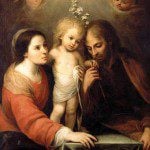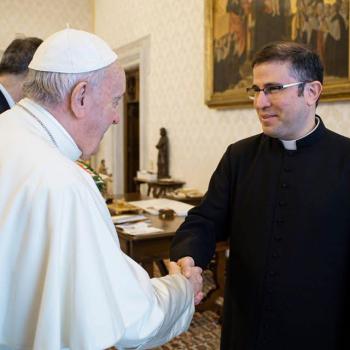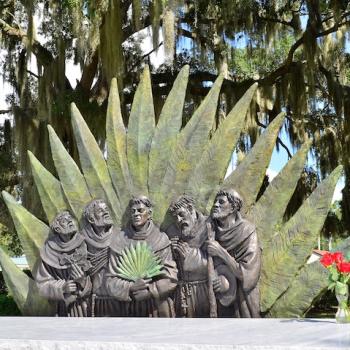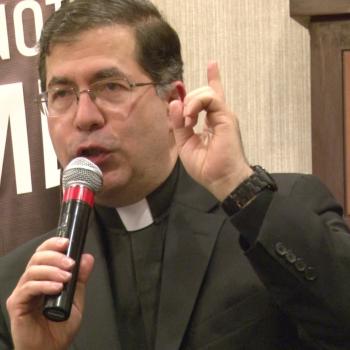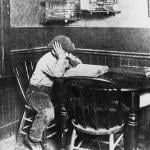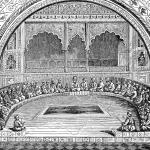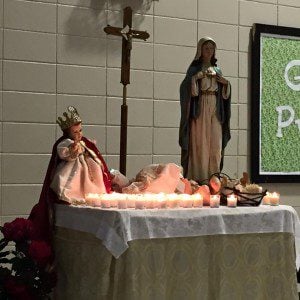 I gave this presentation on popular religiosity and its importance for Latin American Catholics during the Second Diocesan Encuentro of the Diocese of Savannah which took place on January 29th and 30th. The first day, about fifty attended (mostly priests) and Father David Garcia from San Antonio gave a very insightful presentation. The second day, over 250 lay leaders from the whole diocese gathered. It was a magnificent event!
I gave this presentation on popular religiosity and its importance for Latin American Catholics during the Second Diocesan Encuentro of the Diocese of Savannah which took place on January 29th and 30th. The first day, about fifty attended (mostly priests) and Father David Garcia from San Antonio gave a very insightful presentation. The second day, over 250 lay leaders from the whole diocese gathered. It was a magnificent event!
Here’s my presentation which I gave to a group of priests:
Historically, the transmission of the faith in Latin America has not been primarily through the presence of clergy. Priests have been very scarce, so the faith has been passed on mostly through what is experienced at home and through popular religiosity, the traditional public acts of religion such as processions.
In Latin America you do not always use a catechism to evangelize, but it happens naturally through the way children are raised in society. Children participate in popular religious acts and they learn by participating in activities such as Live Stations of the Cross or by dressing up as their favorite saint.
In the Joy of the Gospel, Francis writes, “these acts of popular religiosity have an active evangelizing power which we must not underestimate. To do so, would be to fail to recognize the work of the Holy Spirit. Instead we are called to promote and strengthen it.”
I know of a parish in the United States where the Mexican community showed up at the church on 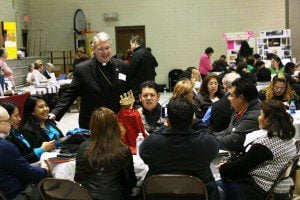 December 12th ready to celebrate Our Lady of Guadalupe and the priest sent them home. It was not on the schedule, he did not understand, so he sent them home and the priest went back to the rectory. For the Mexican community this was incomprehensible. This is like a group of Americans denied a Thanksgiving dinner while living abroad. Wherever Americans go, Thanksgiving will be celebrated. Likewise with these popular expressions of faith since they are part of what you do.
December 12th ready to celebrate Our Lady of Guadalupe and the priest sent them home. It was not on the schedule, he did not understand, so he sent them home and the priest went back to the rectory. For the Mexican community this was incomprehensible. This is like a group of Americans denied a Thanksgiving dinner while living abroad. Wherever Americans go, Thanksgiving will be celebrated. Likewise with these popular expressions of faith since they are part of what you do.
We must be aware that many of these cultural practices are so ingrained in people, so we have to be attentive.
Once, a man showed up after Mass with roses, he came up to me and asked, “where is Our Lady of Guadalupe?” He did not ask “do you have one?” This was a very insightful encounter. The man expected Our Lady of Guadalupe would be in the church, there was no other possibility.
Hispanics from various countries come to the United States and they are mixed together into an artificial community. They bring their own distinct traditions and practices. The vast majority in our diocese are Mexican, so we lean heavy towards traditional Mexican practices like Posadas, Guadalupe, Candelaria etc. We cater to Mexican sensitivities. Within Mexico there are different practices and traditions, so we need to ask and to listen. 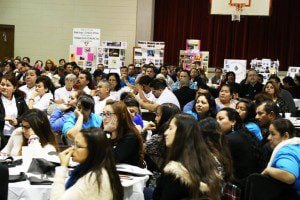
At the same time, we have to be sensitive to the reality that not everyone is Mexican, yet realizing that the vast majority are Mexican, especially in the more rural areas of the diocese. The larger cities have more mixed communities with Puerto Ricans, Colombians, Panamanians, etc. We have to be culturally sensitive to these differences. It is important to ask non-Mexican communities how we can celebrate their traditional feasts.
An equivalent to consider would be this: imagine immigrants abroad are invited to an English Mass, so people from England, Scotland, New Zealand, United States, and South Africa arrive, and they are encouraged to do their “cultural thing together.” The only thing in common is the language they speak and perhaps the faith they share.
At times, parish leadership in Hispanic communities will not be from Mexico, but the majority of the faithful are Mexican. As priests, we must be attentive to this. Your leaders may not understand or know well the needs of the general community.
It is important to ask: How do you celebrate? What do you eat? We should not provide what we think they need, but what they know that they need. Do not assume, but ask.
Oftentimes in the United States, there is a push to celebrate Our Lady of Guadalupe as Our Lady of the Americas, which is fine. Yet, there is a danger to “de-mexicanize” the celebration to the point that the Mexican community (who are the majority) feels out of place. Mexico has particular ways of celebrating her feast day, so I always encourage priests to celebrate the feast as the Mexicans do. Imagine living abroad, and a group of Americans are told that this year for Thanksgiving, pork rather than turkey will be served. We would happily eat the pork, but Thanksgiving is not Thanksgiving without turkey.

We have to be mindful that some traditions have the same name, but are different practices. For example, in the Philippines the Misa de Gallo is a Mass celebrated early in the morning for nine days before Christmas, what in Puerto Rico is called the Misa de Aguinaldos. The Misa de Gallo in most Latin American countries is Christmas midnight Mass. We must ask and be attentive to these traditions: have people tell you. Listen, think about it, and you decide what to do.
Colombians celebrate a novena before Christmas, the Mexicans the Posadas, and Puerto Ricans have parrandas. As a priest, you cannot go to every single thing, but it is important to attend one evening with each different group. Each national group will want to do its own tradition: the Colombians will not mix with the Mexicans, not because they dislike each other, but because they have different traditions.
These traditions cannot be dismissed. For example, you cannot just have a simple Mass for Our Lady of Guadalupe because you will lose an enormous opportunity to evangelize. People show up to these traditional celebrations, even those who never come to Mass. If they feel welcome, they will come back. We must take advantage of opportunities around traditional celebrations to get people in the door. Give out information or booklets with parish information, have tables of parish ministries, etc.
Things can get messy at these celebrations, you have to be patient, but it is always worth doing these larger celebrations. It is a great way to reach people who are distant, to evangelize, and to strengthen the faith. These celebrations are also moving, especially live Stations of the Cross. They allow you to enter into what is happening. At a Posada, you truly feel that you are walking with Mary and Joseph, you feel the rejection, you become part of the action, especially if a real donkey is involved.
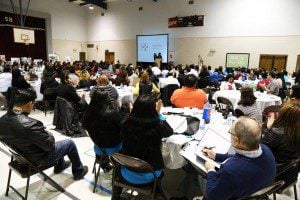
Popular religiosity has a way of making moments of salvation history present here and now.
Second generation of immigrants tend to shy away from expressions of popular religiosity as they distance themselves from religion in general. Some of the new generation have no idea why they do these things. There is a need to catechize and teach the faith.
Popular religiosity is effective in transmitting the faith ideally in a context where the faith is not being challenged. When the faith is challenged, the faithful may not be able to express what they believe even though they have great faith. Today in Latin America people are more educated than 25 years ago, remote areas are not as remote, and Protestants and Mormons are present. Popular religiosity is beautiful and must continue since it can transmit the faith in a way that no theological treatise or catechism can transmit, but we must provide catechetical substance.
Popular religiosity is not just an “entry way” to the faith, but is essential.
Pictures: Justin Niederkorn, all rights reserved, used with permission. Taken during the Second Diocesan Encuentro of the Diocese of Savannah, Sacred Heart Parish, Warner Robins, Georgia



